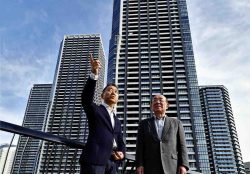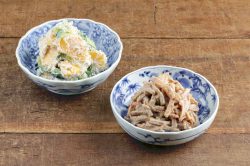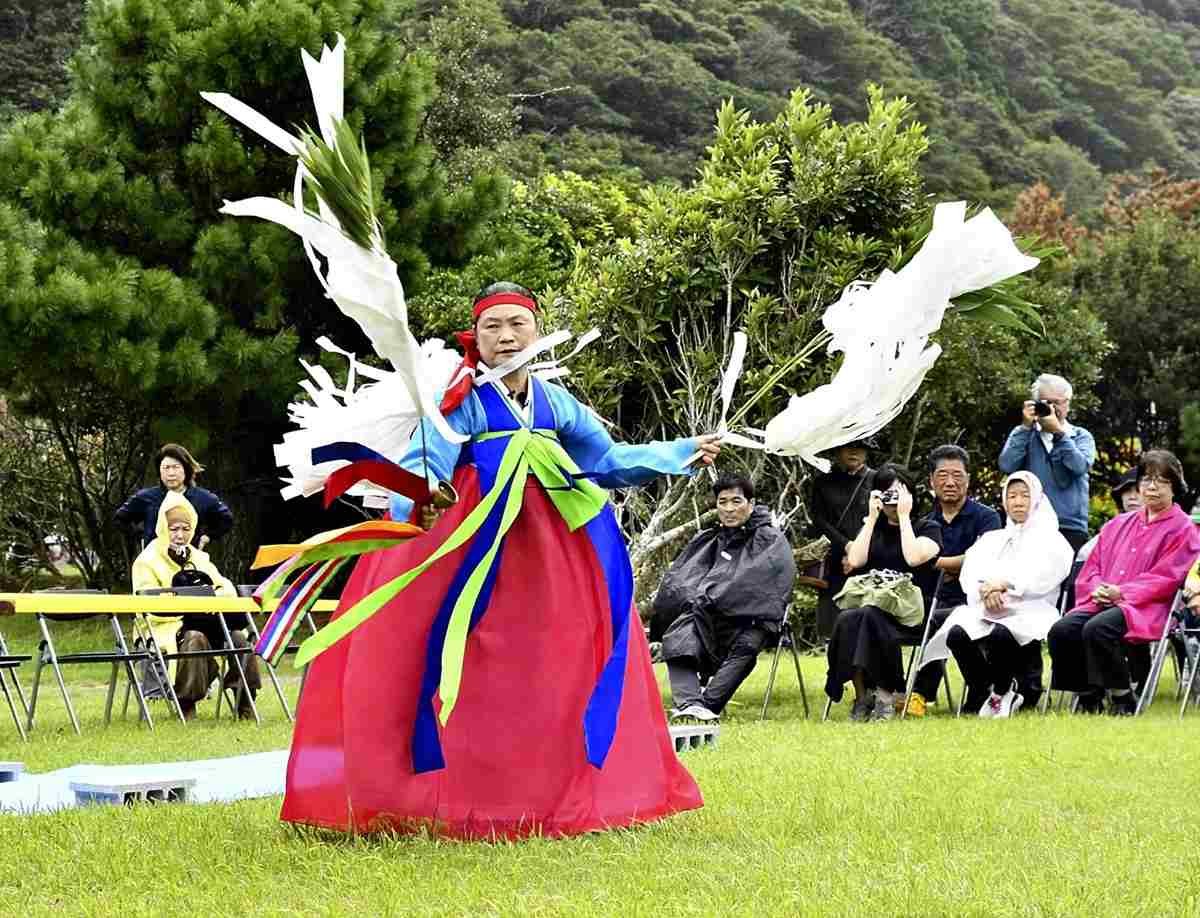
A dancer in traditional South Korean clothing performs at a ceremony for victims in Tsushima, Nagasaki Prefecture, on Sept. 22.
12:30 JST, October 13, 2024
TSUSHIMA, Nagasaki — A ceremony to remember the victims of a 1948 government crackdown in Jeju, South Korea, was held on Sep. 22 on Tsushima Island, Nagasaki Prefecture, where the bodies of many of the victims washed ashore.
In March 1948, Jeju islanders went on strike to protest the South Korean government’s move to hold a general election without North Korea. On April 3, 1948, young people armed with rifles and other weapons attacked a police station and conducted other assaults. The government saw the attacks as part of a communist-instigated uprising and carried out a brutal crackdown that reportedly resulted in the deaths of about 30,000 of the island’s 300,000 residents, including children and the elderly.
The bodies of those killed in the crackdown washed up one after another on the shores of the northwestern part of Tsushima Island, which is close to the Korean Peninsula, and island locals cremated and buried them.
Yukiharu Eto, 67, following the wishes of his father, who participated in the burials, built a memorial tower on the shore in 2007.
About 110 people from Japan and South Korea participated in the Sept. 22 ceremony, where they offered prayers for the victims. A person in traditional South Korean clothing danced to the rhythm of drums and bells.
Ko Chun-ja, 83, who lives in Osaka, saw the incident as a child and lost her grandmother and two uncles in the crackdown. “I want to show my gratitude to those who put the ceremony on,” she said.
Related Tags
"Features" POPULAR ARTICLE
-

Sanrio to Open Museum in Yamanashi Pref. Dedicated to Founder, Exhibits Include Hello Kitty, Other Characters
-
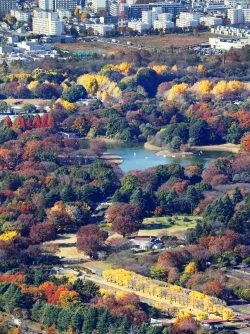
Autumn Foliage Surrounds Visitors to Tokyo’s Showa Kinen Park
-

My Daughter No Longer Speaks to Me, But I Want to See Her and My Grandchild
-

Kumamoto: Public Bath Refurbished as Library Where You Can Chat, Take Photos
-
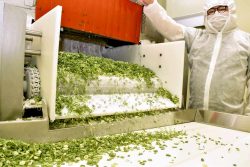
Frozen Vegetables: Demand Rises for Convenient, Tasty Domestic Produce
JN ACCESS RANKING
-

Keidanren Chairman Yoshinobu Tsutsui Visits Kashiwazaki-Kariwa Nuclear Power Plant; Inspects New Emergency Safety System
-

Imports of Rare Earths from China Facing Delays, May Be Caused by Deterioration of Japan-China Relations
-

University of Tokyo Professor Discusses Japanese Economic Security in Interview Ahead of Forum
-

Japan Pulls out of Vietnam Nuclear Project, Complicating Hanoi’s Power Plans
-

Govt Aims to Expand NISA Program Lineup, Abolish Age Restriction










